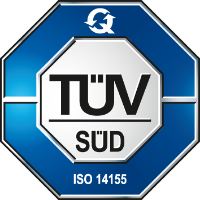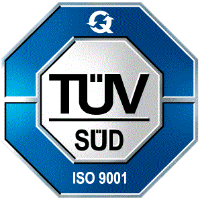A new version of the European Guideline MEDDEV 2.7/1 rev 4 was issued in June 2016 affecting all companies that market medical devices in Europe.
This guidance promotes a common approach to clinical evaluation for medical devices regulated by the directives 93/42/EEC (MDD) and 90/385/EEC (AIMDD). Its purpose is to provide manufacturers with recommendations for collecting, appraising and analyzing clinical data to demonstrate compliance of a device with relevant Essential Requirements (ER) for safety and performance, when using it according to the manufacturer´s Instructions for Use. The MEDDEV 2.7/1 rev 4 is a guidance document and is not subject to any implementation period. Therefore, to obtain initial CE mark or to maintain CE mark of your devices, it is important to start using the new version.
Unchanged fundamental:
Clinical Evaluation is one of your responsibility as a manufacturer and the Clinical Evaluation Report (CER), required for all classes of medical devices, is a fundamental element of the technical documentation of your device. The CER is a four-legged table that includes (i) any newly-conducted clinical investigations on your device (ii) your unpublished data, such as biological safety data, bench testing data, post marketing surveillance data, or complaint and experience records, (iii) a literature review of clinical investigations published on own or equivalent devices (iv) the risk analysis related to your device.
New emphasis:
When writing a CER, you are required to ensure that ER1 (safety), ER3 (performance) and ER6 (risk-benefit) in Annex I of MDD, respectively ER1, ER2 and ER5 in Annex I of AIMDD, are supported with adequate clinical evidence. Proper justifications will be necessary to assure that risk, claims, biocompatibility and non-clinical data are sufficient to ensure compliance with the ERs. Clinical data used to support clinical evidence can be sourced from: clinical investigation(s) of your device; scientific literature related to a similar device for which equivalence with your device can be demonstrated; or a combination of both. Proper documentation and justification of the strategy used to retrieve and appraise clinical data should be included in the CER. Any gaps in showing conformity to ERs will require a clinical investigation
Clinical Equivalence:
The concept of Clinical equivalence has been clearly defined and the room for interpretation has become smaller. Appendix A1 of the new MEDDEV covers equivalence and now specifies that (i) demonstration of equivalence can only be based on a single CE-marked device, (ii) equivalence of all three characteristics (Clinical, Technical and Biological) of the devices need to be fulfilled.
Qualification of evaluators of clinical evaluation reports:
According to the revised guideline, the clinical evaluation should be conducted by a suitably qualified individual or a team. The guidance now requires increased competences of evaluators for clinical investigation design, biostatistics, regulatory requirements and medical writing, device technology, diagnosis and management of the conditions intended to be diagnosed or managed by the device. In addition, the evaluators should have a higher degree education in the respective field and 5 years of documented professional experience or 10 years of documented professional experience if a degree is not a prerequisite for a given task. If the level of expertise by the evaluator is less this has to be duly justified. Finally, the manufacturer has to assure that a declaration of interests for the evaluators are available.
Post Market Surveillance:
A CER is required for the initial CE Marking of a medical device, and must be actively updated thereafter and on a regular basis. The frequency to update the CER should be justified by the manufacturer taking into account the risk classification of the device, whether the device is well established; design changes or changes to manufacturing procedures. The guidance requires to implement a periodic update of the CER to review all data sources of clinical evaluations and to include any new clinical data that have been published during the product’s life-cycle. Updates of other key documents, e.g. the ER checklist, risk management report, post-market surveillance and the complaints file should also be taken into account.
How can Qmed help:
Clinical Evaluation Reports are more important in Europe today than ever before and expectations of notified bodies regarding the content of CERs are very high. At Qmed Consulting, we can help you, with our team of trained global professionals, performing an initial GAP assessment of your existing CERs and what needs to be done. We have the capability to address all four legs of the Clinical Evaluation Report on your behalf. Please contact Helene Quie: hq@qmed-consulting.com with your request for more information.



